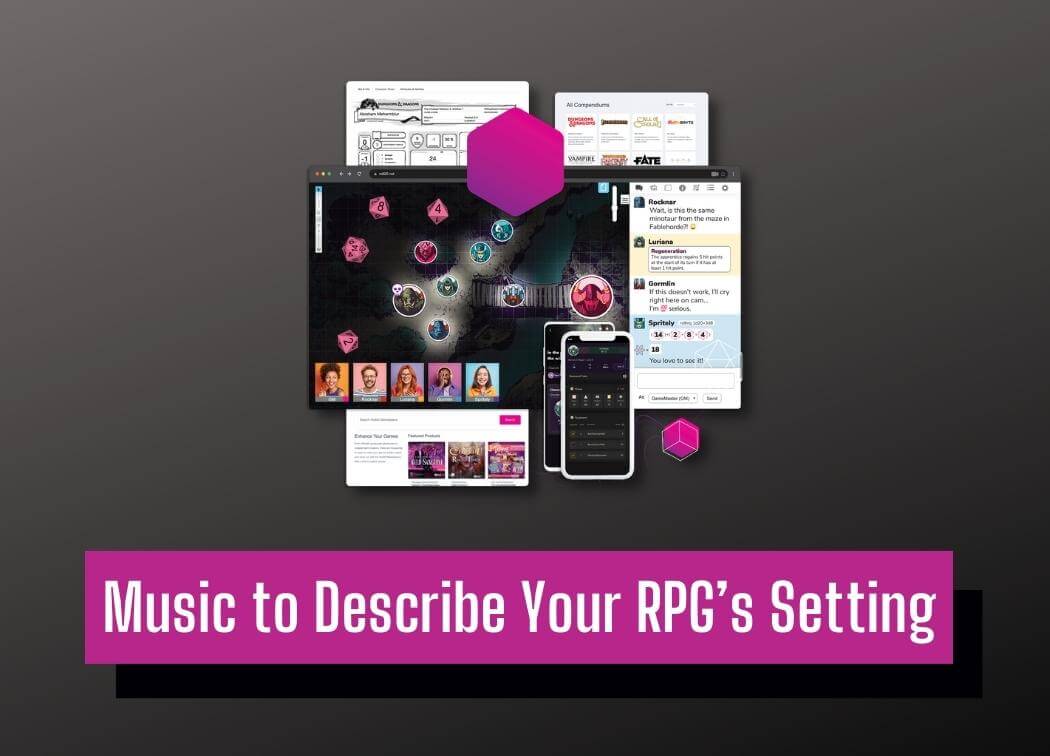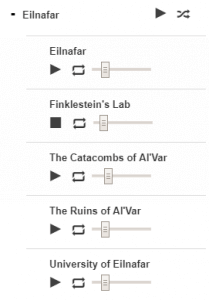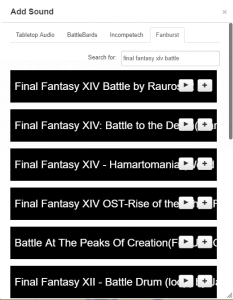Using Music to Describe Your RPG’s Setting

I love using Roll20. With it I play about 2-3 different tabletop RPGs a week. Without it, I would play 0. My friends and I don’t live near each other anymore. That’s just life sometimes. Regardless, one of the major challenges I’ve found with using Roll20 as opposed to drawing out a minimalist map is that a map in Roll20 shows a lot more scenery.
There’s less that is left up to the players’ imagination. It can be hard to describe a scene over a microphone as well. However, it became considerably easier for me to do so once I began incorporating music into my RPGs about a year and a half ago.
I’m not an artist by any stretch of the imagination. I’ve made great strides in explaining the setting, but putting some background music on has made a few noticeable changes in my games. Let’s delve into my findings and learn some of the “dos and don’ts” of using music in your TTRPGs.
My Findings
Unsurprisingly, my players noticed immediately when I began to play music during our sessions. At first, I just used “battle music” to get them hyped up for combat. I used 2 or 3 different tracks for regular encounters and a boss battle theme. It was well-received and I noticed that the players immediately paid more attention once they heard a change in music, especially when the boss battle theme came on.
I then started using ambient music in dungeons and while the players were traveling. If the players were underground or in a cave a more melancholy dirge would play. If the players were camping out in the forest I played ambient music that included sounds of animals, fire crackling, and wind blowing through the trees. Again, I noticed that this helped to set the scene for the party. It was one more element for them to grab onto while they tried to picture the scene.
Then I began to use different music while the party is in the various cities and towns in my world. Again, this helps to paint the scene. It also has been a great way for me differentiate how the different races “feel” to the players.
As I’ve mentioned before the main campaign I’m running is based around certain races and factions constantly being at odds with each other, so this has been a great way to showcase their differences. For example, the high elves have more of a fantasy/magical theme with harps and chimes. The dwarves and gnomes are mountain dwellers and Master of Technology. They have more of an industrial theme with heavy bass.

I’ve also given important main characters their own “theme music”. This helps players remember those important names in your game if nothing else they’re at least “that person with the ____ music”. The big bad in the Apocalypse World game that I run on weeks when we’re missing players for the D&D game has his own theme music that has a heavy metal influence. The players haven’t met him yet though, but I can’t wait to unveil that one!
Dos and Don’ts
There’s a skill to selecting and playing the right type of music, and it’s not particularly hard to learn. If you are familiar with picking out music for playing in the background of a video, it’s a very similar concept. We can boil this down into a basic list of dos and don’ts for picking out music.
Dos
- Pick a song that loops well or make a playlist of songs for the scene.
- Ensure it is at an appropriate volume. You should be able to talk over the music using your normal speaking voice.
- Find music that you feel encompasses the theme of the setting you’re trying to convey.
Don’ts
- Pick music with vocals.
- Choose a genre the group as a whole dislikes. No one likes to listen to music they hate for a few hours a session.
- Insist you play music. If your players don’t like music, don’t play it! Similar idea to #2.
Good Music
The song above is an example of what a good boss battle theme is in my opinion. The track is heavy, it’s intense. It sets the theme of an epic battle. It’s not distracting in a way that will take away from your descriptions and role-play. I’m a big fan of the Final Fantasy series’ music for my D&D games.
Bad Music
The track above is an example of bad boss music. It sets the theme extremely well and is a great track. But those vocals are distracting! First of all, even though you can’t understand the vocals, your group will definitely spend time attempting to. Secondly, you have to talk over the music. It’s distracting listening to two people talk at once.
How To
The two most popular ways to play TTRPGs that I’m aware of are either in person or on Roll20. Let’s dig into how to select and play music for your games in these two platforms. If you have any additional suggestions feel free to drop me a comment and I’ll add it into the post.
At The Table
This one is easy. Grab yourself some cheap Bluetooth speakers and have a Spotify playlist or a playlist on any other music streaming/playing service. From there just press play and switch the music using your phone, laptop, or tablet as desired. This can be fun for the players too if you want to have a playlist where you can all collaborate and choose music together. Honestly, anytime you can get your players involved in prepping the game do it. People love feeling involved, and they’ll treat something more seriously if they put some work into it themselves.
Roll20

If you use Roll20 there is a jukebox that you can use. In addition to that, there are 4 separate music streaming services that you can pull tracks from. In this window, you can sample the music to see what fits the theme you’re going for. Just click the add button and slap it into the appropriate playlist and you’re good to go!
The only issue I’ve run into is that the music is all from different sources. Therefore, it’s all at different volumes and qualities. Ensure you listen to it and set the master volume level to an appropriate setting before playing it for your players. I’ve been the butt of many jokes from my group for blowing their eardrums out on more than one occasion because I was lazy.
If you are looking for other ways to enhance your Roll20 campaign that are not music-related check out my dynamic lighting tutorial!
Conclusions
Always keep the 3 dos and don’ts in mind. They really just boil down to pick appropriate music, play it at a reasonable volume, and listen to your friends when they give you feedback. It will take you some trial and error in finding what really “clicks” with your preferences and style. The good thing is that once you make a playlist for a generic setting or scene such as a battle, you won’t have to do it again.
I love music, and being able to incorporate it into my games has added another level to the setting. It doesn’t take much effort to experience a payoff in the form of better player engagement and more memorable battles. Give it a try at your next session!
